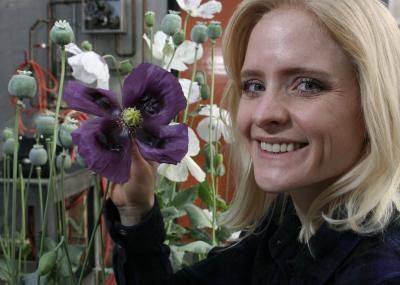Biochemist developed way to silence genes that cause diseases
German top researcher Thomas Tuschl nominated for European Inventor Award 2014
Thanks to the ground-breaking research of 47-year-old German biochemist Thomas Tuschl, silencing genes is no longer a utopia. His method of switching off human genes is the basis for promising therapies to treat genetic disorders that trigger serious conditions such as haemophilia, amyloidosis, andporphyria, as well as high cholesterol. Acknowledging this achievement, the European Patent Office (EPO) has nominated Tuschl for the European Inventor Award 2014 in the category “Research”. Europe’s “Oscar” for innovation and research will be awarded in Berlin on 17 June.
When developed 13 years ago, Tuschl’s method of silencing specific genes was a biomedical research sensation. All of a sudden, it seemed to be possible to cure diseases by switching off individual genes. “The crucial knowledge that we had back then was that long double-stranded RNA didn’t work when implanted in human cells – it actually killed them. By thoroughly analyzing the process, we were able to determine that the long double strands are converted into shorter strands,” Thomas Tuschl explains. “So we chemically synthesized short double strands and demonstrated that they did not trigger any side effects and that they are a great tool for silencing genes in the human body.”
“Thomas Tuschl’s research has adapted an important scientific discovery for practical use in human medicine. His procedure for deactivating certain genes is the key to the development of a new generation of treatments for genetic diseases,” said EPO president Benoît Battistelli upon announcing the nomination for the European Inventor Award 2014.
The mechanism that silences genes – the so-called RNA interference (RNAi) – was first discovered in the nematode worm C. elegans by two American scientists Andrew Fire and Craig Mello in 1998. During this process, the messenger molecule mRNA that transfers information is destroyed in a targeted way which inhibits the translation of genetic information for protein synthesis.
Tuschl, who was born in Franconia and studied chemistry at Regensburg University, was pursuing his postdoctoral studies at the Massachusetts Institute of Technology (MIT) at the time of the US scientists’ discovery for which they were awarded the Nobel Prize in 2006. His interest was triggered, and together with his postdoc colleague Phillip Zamore, Tuschl set himself the task of transferring the experiment to the cells of the fruit fly Drosophila and later on also to mammal cells. After succeeding and returning back to Germany in 1999, he continued his research at the Max Planck Institute for Biophysical Chemistry in Göttingen where he developed a procedure that deploys the RNAi method to also silence human genes that cause diseases.
In order to do that he planted short, double-stranded RNA in a cell. This RNA sequence destroys the messenger RNA in the cell, thereby stopping any damaging effects, and, as Tuschl discovered, it is made up of exactly 21 components which can be produced in the laboratory. The method ensures that proteins are not being produced by the cell, hence no damage is being caused while, at the same time, the gene remains intact. This opened the door to researching the function of genes and the role they play in the context of diseases.
Apart from its value for basic research Tuschl’s method today also plays a vital role in developing different RNAi-based therapies. Promising laboratory results have already been achieved with regards to certain genetic disorders. In the foreseeable future these medications will help to treat patients worldwide.
Developing this revolutionary method turned Tuschl into one of the most important RNA biochemists in the world. Since 2003, Tuschl, who is married and a father of three children, has been professor at Rockefeller University in New York, continuing his research there.
Tuschl’s gene components that trigger RNAi were patented early on and therefore also swiftly used in pharmaceutical research. The patent is owned by the US company Alnylam which was co-founded by the researcher in 2002. With a market capitalisation of EUR 2.8 billion the biopharmaceutical firm focuses on developing and marketing RNAi-based therapies. In order to do so it has partnered with a number of leading global pharmaceutical companies such as Merck or Genzyme, a Sanofi company.
For a number of products that are based on Tuschl’s method clinical trials are currently ongoing. According to estimates the novel generation of drugs will be able to help millions of patients. The market potential for developing therapies using the method of silencing genes is estimated to be in the billion euro region.






















































